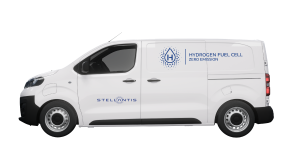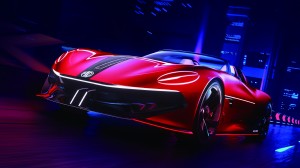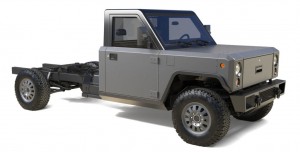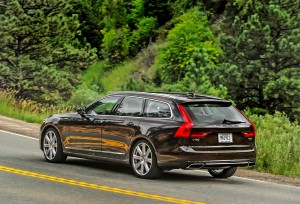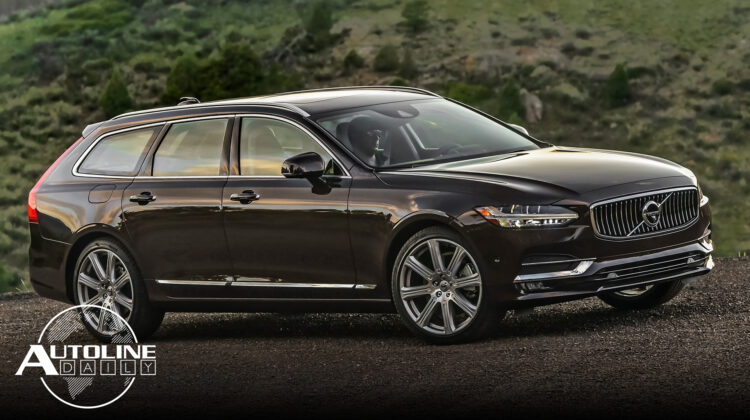

Follow us on social media:
Runtime: 11:43
0:08 Toyota #1 In U.S. Market in March
0:37 Top Market Share Gainers
1:20 U.S. Car Sales Beat Analyst Expectations
1:54 Tesla Posts Impressive Q1 Sales
2:56 Stellantis Launches Fuel Cell Light Commercial Vans
4:31 Lordstown Shows Off 1st Beta Trucks
5:06 MG Teases All-Electric Roadster
5:48 Bollinger vs. ICE Chassis Cab Price Comparison
7:28 Why EVs Should “Sip” Electricity Instead of Guzzling It
9:02 Volvo V90 Checks All the Boxes
Visit our sponsors to thank them for their support of Autoline Daily: BorgWarner, Bridgestone, Intrepid Control Systems and ZF.
This is Autoline Daily, the show dedicated to enthusiasts of the global automotive industry.
TOYOTA #1 IN U.S. MARKET IN MARCH
What’s the biggest car company in America? Well, last month it was Toyota. The giant Japanese automaker easily outsold General Motors, Ford and the Chrysler part of Stellantis—in their home market. In fact, it was a terrible first quarter for Detroit’s automakers as they lost significant amounts of market share. Ford dropped more than 10%, GM was down nearly 7% and Stellantis dropped 6%.
| U.S. Market Share Change, Q1 2021 | |
|---|---|
| Ford Motor Company | -10.4% |
| General Motors | -6.7% |
| Stellantis | -6.2% |
| Source: Wards Intelligence | |
TOP MARKET SHARE GAINERS
Even though the Detroit Three lost share, they posted big percentage gains in sales. In fact, everyone did. But that’s compared to March of last year, which is when the pandemic shutdowns started. And with everyone posting big gains, it’s kind of confusing to see how they’re doing relative to one another. So let’s look at market share, instead of sales. From that standpoint, Porsche was the hottest brand last month, posting a whopping 33% gain in share. Volvo and Audi were both up 16%, Mazda was hot on their heels, and Hyundai was right behind Mazda.
| U.S. Market Share Change, Q1 2021 | |
|---|---|
| Porsche | +33% |
| Volvo | +16.6% |
| Audi | +16.6% |
| Mazda | +16% |
| Hyundai | +15.3% |
| Source: Wards Intelligence | |
U.S. CAR SALES BEAT ANALYST EXPECTATIONS
Overall, car sales came in far better in March than any of the analysts were expecting. Automakers sold over 1.5 million vehicles, which is an extremely strong number. And the SAAR, or seasonally adjusted annual rate, came in at a stunning 17.7 million units. And all this happened despite weak fleet sales, and low levels of inventory. Tell you what. If these automakers ever solve that chip shortage, you’re going to see sales go through the roof.
| U.S. Market Sales | ||
|---|---|---|
| March, 2021 v March, 2020 | ||
| Sales | 1.5 M | +53.6% |
| SAAR | 17.75 M | 11.36 M |
| Source: Wards Intelligence | ||
TESLA POSTS IMPRESSIVE Q1 SALES
Tesla also released its first quarter global sales, which came to 184,800 vehicles. That’s better than most analysts were expecting. They thought Tesla would sell 170,000 cars. Wards reports that fewer than 50,000 of those sales were in the U.S. market. And if that’s right, then Tesla must have seen significant increases in China and Europe.
STELLANTIS LAUNCHES FUEL CELL LIGHT COMMERCIAL VANS
More action to report in the world of fuel cells today. The Stellantis Group announced it’s coming out with a fleet of light commercial vehicles that run on hydrogen. And it’s taking a slightly unique approach. It’s going with what it calls a mid-power architecture, which combines a good amount of hydrogen storage with a moderately sized battery pack. The vans will feature 3 hydrogen tanks that hold 120 liters or just under 32 gallons and a 10.5 kWh battery pack. That setup is estimated to return a range of over 400 kilometers or about 250 miles. For comparison, a Toyota Mirai holds about 5 more gallons of hydrogen, but only has a 1.6 kWh pack. To save on costs, Stellantis is using its current medium EV van platform then ripping out the batteries and stuffing the hydrogen tanks between the frame rails. This allows the vans to keep their payload capacity and cargo space intact. The battery, which is the same one it uses in other plug-in hybrid vehicles, also saving cost, is mounted under the front seats. There is a separate plug for the battery itself, and it alone can provide up to 50 kilometers or 31 miles of range. Versions of the Citroen Jumpy, Peugeot Expert and Opel Vivaro will be built in Germany and deliveries start before the end of this year.
LORDSTOWN SHOWS OFF 1ST BETA TRUCKS
Lordstown Motors is doing everything it can to prove the report by Hindenburg Research wrong. To help show that it’s got its manufacturing under control, Lordstown released a video of the first two beta versions of its Endurance pickup rolling off the assembly line. It says it has 55 more betas to build, but still plans to start production in September. Hindenburg claims Lordstown has manufacturing issues that will push production back years and also that Lordstown’s pre-order claims are misleading.
MG TEASES ALL-ELECTRIC ROADSTER
British sportscar maker MG revealed some design sketches of an all-electric roadster called the Cyberster. While the concept was created at the company’s design studio in London, the car will make its debut at the Shanghai Auto Show later this month. The two-seater features MG’s signature round headlights, a slim grille and the company’s “Magic Eye” headlights that open when turned on. It has a range of 800 kilometers or about 500 miles and can move from 0 to 100 km/h in under three seconds. That’s all the info we have for now but we’ll learn more when it’s unveiled in a few weeks.
BOLLINGER VS. ICE CHASSIS CAB PRICE COMPARISON
Some people were a little shocked at the sticker price of Bollinger’s B2 CHASS-E Cab commercial vehicle platform, which ranges from $70,000 to $100,000, before destination, taxes or incentives. But according to Bollinger, customers who buy the $70,000 version will end up saving over $27,000, compared to an ICE chassis cab setup, when looking at the total cost of ownership over 10 years. A couple of interesting notes. That comparison factors in a $5,000 engine and transmission replacement for the ICE truck and a $12,400 battery pack for the Bollinger. While that is a great deal of savings, this raises a question for me. If I did my math right, the balance of cost doesn’t tip into the EVs favor until the last few years of ownership. Do fleet owners keep their vehicles around long enough to justify making the switch from ICE to EV?
WHY EVs SHOULD “SIP” ELECTRICITY INSTEAD OF GUZZLING IT
They say that range anxiety is one of the key things holding back sales of electric cars. But Andy Daga, (like saga) the Chairman and CEO of Momentum Dynamics, says he’s got the solution. Momentum Dynamics makes inductive charging pads that can be built right into the pavement. Andy was recently on Autoline This Week, and here’s his idea of how to solve range anxiety.
“The infrastructure of charging can contribute to the range of the vehicle and also to its bad cold weather performance by doing more frequent charging. If you’re going to ask people to charge more frequently, it’s like asking them to go the gas station and fill up every day, they don’t like to fill up in the first place once a week. So what we got to do is take the fill up experience out of the picture completely, automate the charging experience and just add 50 miles, 100 miles here/there and ‘sip’ the energy rather than ‘guzzle’ energy as you move through your life experience with the vehicle. And the only time range then becomes a problem is when you’re taking a long-distance trip, driving from New York to Florida, that’s tolerable to make a rest stop and charge while you’re at the rest stop. But for every day neighborhood or mega-neighborhood driving within 100 miles of your home, there really is not a limitation on range if you ‘sip’ the energy along the way at the places where you stop.”
VOLVO V90 CHECKS ALL THE BOXES
If automotive journalists ruled the world, station wagons would be the best-selling cars on the planet. Talk to any car journo and they’ll tell you how they believe the public should be buying wagons instead of crossovers. We plead guilty to that sentiment. We had a Volvo V90 wagon in the Autoline Garage this week and it checked just about all the boxes. Easy to get in and out of. Easy to load gear in the back. Plenty of luggage space with the rear seats folded down. Beautiful to look at. So comfortable to sit in. And thanks to having both a supercharger and a turbocharger, plenty of power the split second you need it. So why are sales so lousy? Volvo’s SUVs are flying off the lot, but the V90 wagon is nailed to the showroom floor. They are extremely rare to see. One reason may be the price. The loaded T6 all-wheel-drive Inscription trim line that we drove cost over $67,000. And while it’s rated at 25 miles to the gallon, the gauge on our car showed 23 MPGs. That’s what the XC90 SUV is rated at. Also, for some reason Volvo seems to have tuned the suspension in a way that generates a low vibration in the car at highway speeds. The V90 doesn’t ride nearly as well or smoothly as the XC60 we were recently in. And maybe that explains why Volvo only sold about 200 V90s last month in the American market. While we love wagons, it’s clear the public doesn’t see a compelling reason to buy them.
But that’s it for today, thanks for watching and have a great weekend.
Thanks to our partner for embedding Autoline Daily on its website: WardsAuto.com

John McElroy is an influential thought leader in the automotive industry. He is a journalist, lecturer, commentator and entrepreneur. He created “Autoline Daily,” the first industry webcast of industry news and analysis.






